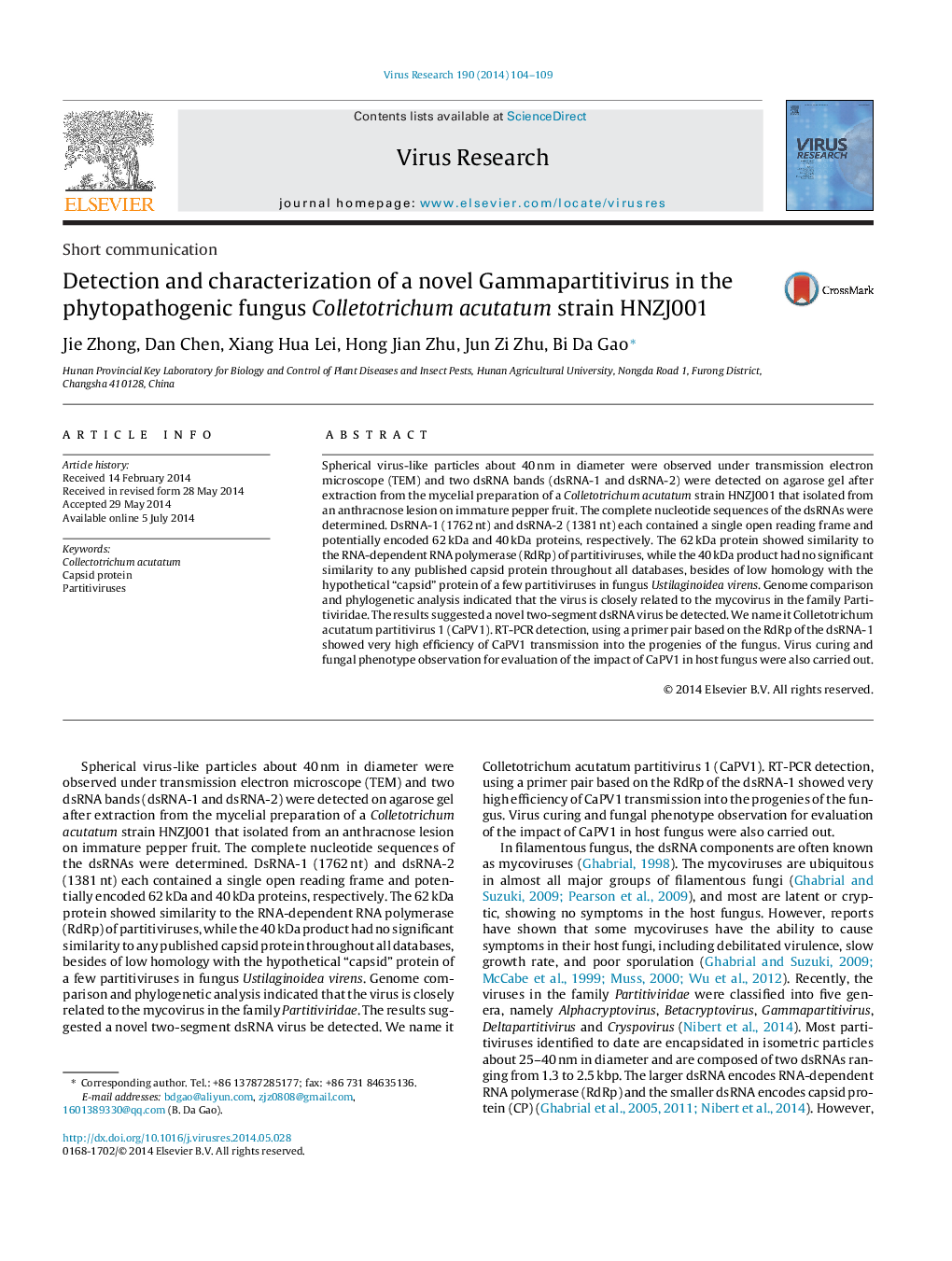| Article ID | Journal | Published Year | Pages | File Type |
|---|---|---|---|---|
| 6142388 | Virus Research | 2014 | 6 Pages |
â¢First describe the genome sequence of a Gammapartitivirus in the phytopathogenic fungus Collectotrichum acutatum.â¢A RT-PCR detection shows very high efficiency of virus transmission into the progeny.â¢CaPV1 encodes a unique protein of 40 kDa (dsRNA2) that is different from the typical CP of partitiviruses.
Spherical virus-like particles about 40Â nm in diameter were observed under transmission electron microscope (TEM) and two dsRNA bands (dsRNA-1 and dsRNA-2) were detected on agarose gel after extraction from the mycelial preparation of a Colletotrichum acutatum strain HNZJ001 that isolated from an anthracnose lesion on immature pepper fruit. The complete nucleotide sequences of the dsRNAs were determined. DsRNA-1 (1762Â nt) and dsRNA-2 (1381Â nt) each contained a single open reading frame and potentially encoded 62Â kDa and 40Â kDa proteins, respectively. The 62Â kDa protein showed similarity to the RNA-dependent RNA polymerase (RdRp) of partitiviruses, while the 40Â kDa product had no significant similarity to any published capsid protein throughout all databases, besides of low homology with the hypothetical “capsid” protein of a few partitiviruses in fungus Ustilaginoidea virens. Genome comparison and phylogenetic analysis indicated that the virus is closely related to the mycovirus in the family Partitiviridae. The results suggested a novel two-segment dsRNA virus be detected. We name it Colletotrichum acutatum partitivirus 1 (CaPV1). RT-PCR detection, using a primer pair based on the RdRp of the dsRNA-1 showed very high efficiency of CaPV1 transmission into the progenies of the fungus. Virus curing and fungal phenotype observation for evaluation of the impact of CaPV1 in host fungus were also carried out.
